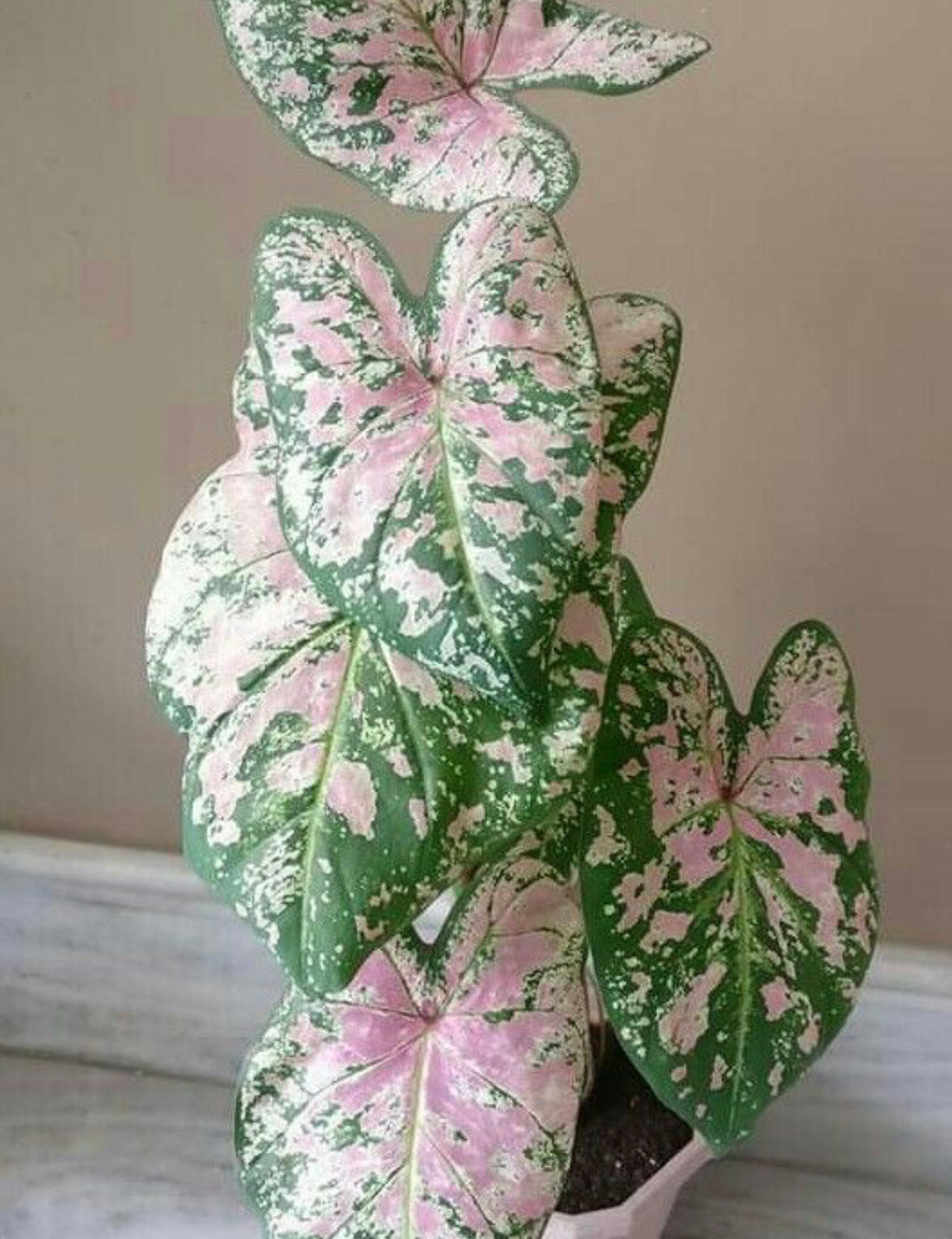The Beauty of Caladiums
Share
Caladiums, native to tropical forests in South and Central America, are vibrant, heart-shaped leaf plants belonging to the arum family (Araceae). Caladium bicolor, originating from Brazil, stands as the most prevalent among several species in this genus used for ornamental purposes. Exhibiting a rich array of colorful leaves, Caladiums thrive in regions with distinct wet and dry seasons.

Renowned for their dramatic foliage, Caladiums boast thousands of named cultivars, primarily distinguished by their leaf patterns and colors. Among the commonly used names are angels wings and elephant ears, though it's important not to confuse them with other plants like Alocasia, Colocasia, and Xanthosoma, which share the elephant ears moniker.
Caladium leaves, characterized by long petioles emerging directly from the underground tuber, come in various shades of green, white, pink, rose, and red, often featuring prominently colored midribs and contrasting margins. These foliage plants have been cultivated in Europe since the late 1700s, prized for their ornamental value.
The two main types of Caladiums are the fancy-leaved and strap- or lance-leaved varieties. Fancy-leaved types exhibit large, heart-shaped leaves on long petioles, while strap- or lance-leaved types showcase narrower leaves on shorter petioles, making them more compact.

Though primarily grown for foliage, Caladiums may occasionally bloom, producing arum-type flowers with green or pinkish spathes surrounding short white spadices. However, most gardeners prefer to remove the inflorescence to redirect the plant's energy towards leaf production.

In garden settings, Caladiums add color and texture to shaded areas and container gardens. Pairing them with shade-loving annuals or complementary plants like ferns, astilbe, and shade-tolerant iris enhances their visual appeal.
Caladiums grow from tuberous corms, with larger tubers producing more substantial foliage displays. Regular fertilization and moisture maintenance are essential for optimal growth. In colder climates, tubers should be lifted before the first frost and stored in dry sphagnum moss under mild conditions.
As houseplants, Caladiums thrive in warm, bright, and humid environments, entering dormancy after a few months. Propagation is typically done by dividing tubers in spring.
While Caladiums are generally low-maintenance, they can be toxic if ingested and may irritate sensitive skin. With proper care, these tropical beauties can bring a touch of lush elegance to any garden or indoor space.

